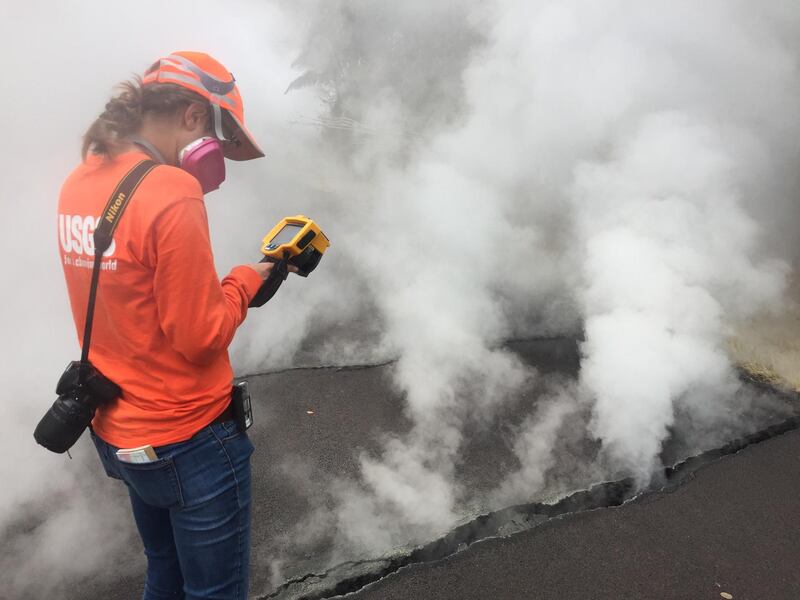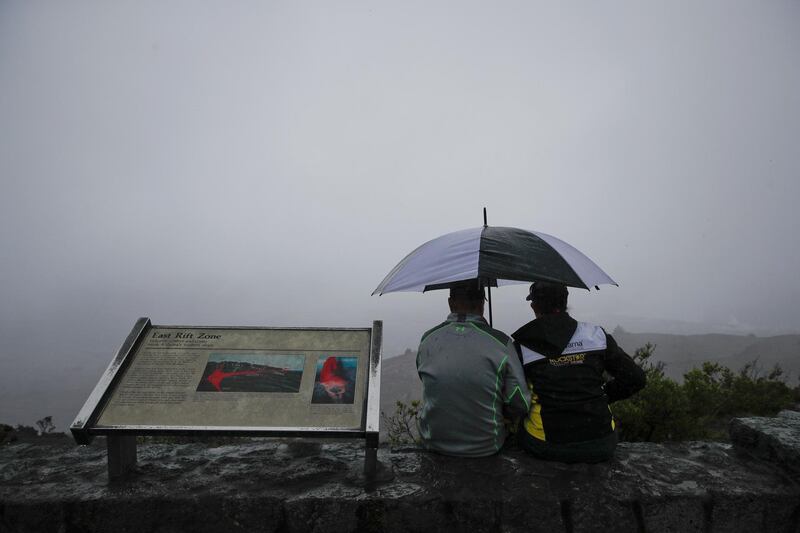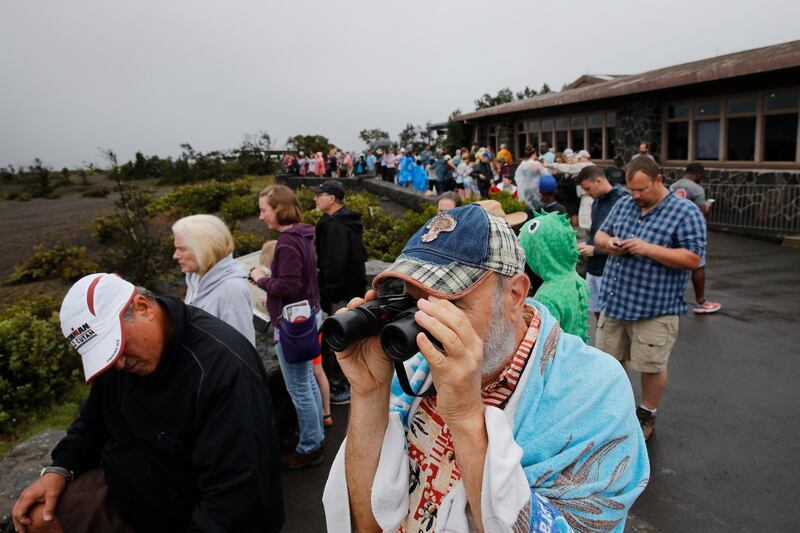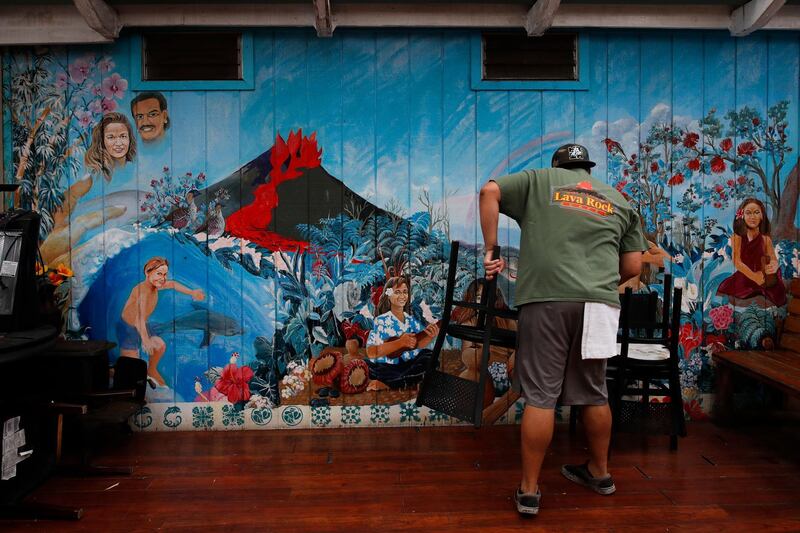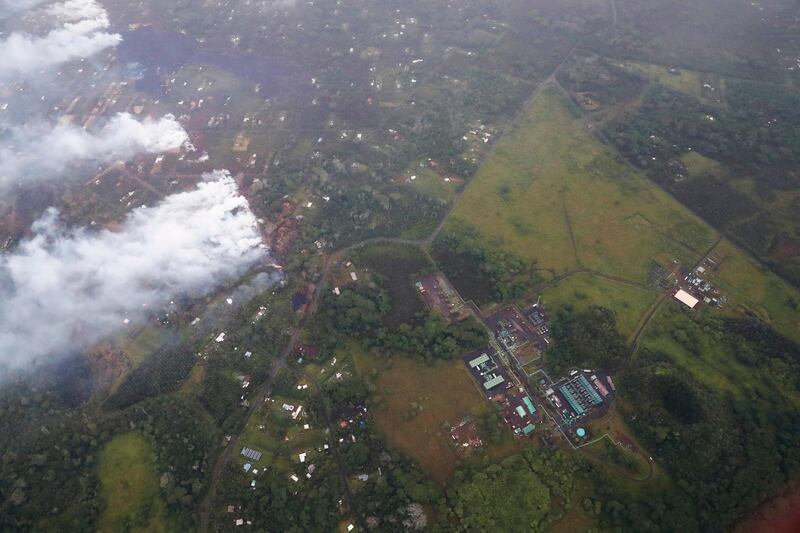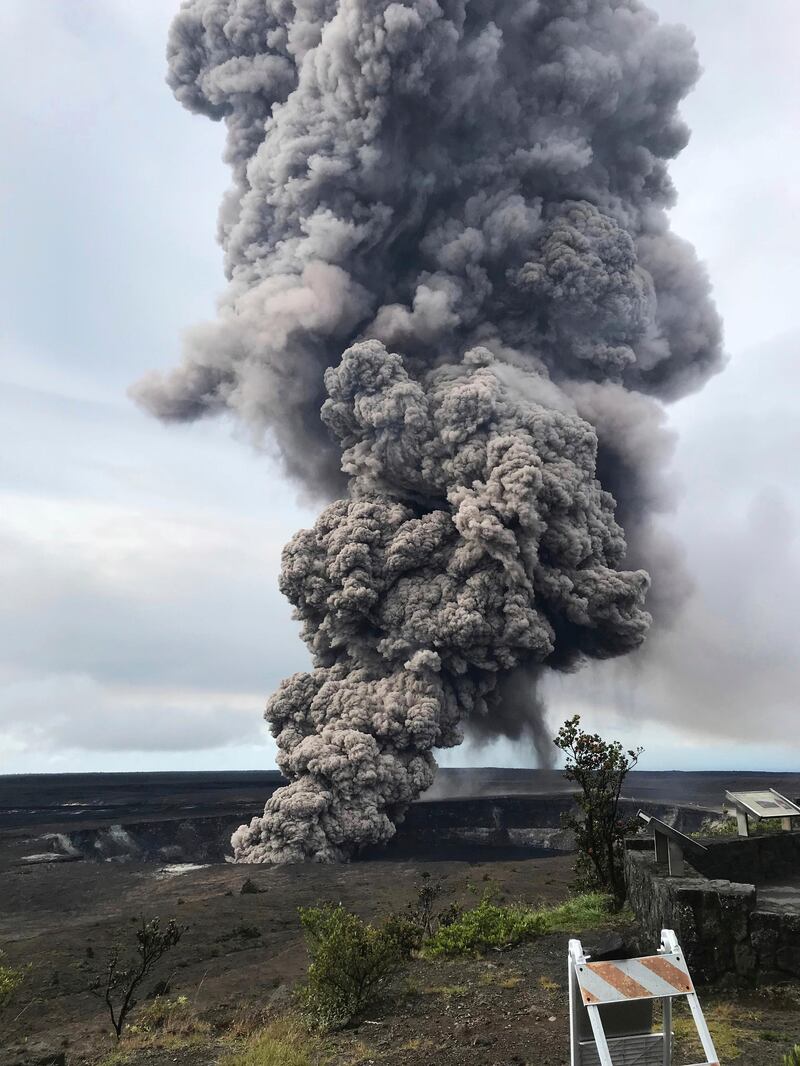If Hawaii’s Kilauea volcano blows its top in the coming days or weeks, as experts fear, it could hurl ash and boulders the size of refrigerators miles into the air, shutting down airline traffic and endangering lives in all directions, scientists said Thursday.
“If it goes up, it will come down,” said Charles Mandeville, volcano hazards coordinator for the US Geological Survey. “You don’t want to be underneath anything that weighs 10 tons when it’s coming out at 120 mph.”
The volcano, which has been spitting and sputtering lava for a week, has destroyed more than two dozen homes and threatened a geothermal plant. The added threat of an explosive eruption could ground planes at one of the Big Island’s two major airports and pose other dangers. The national park around the volcano announced that it would close because of the risks.
“We know the volcano is capable of doing this,” Mr Mandeville said, citing similar explosions at Kilauea in 1925, 1790 and four other times in the last few thousand years. “We know it is a distinct possibility.”
He would not estimate the likelihood of such an explosion, but said the internal volcanic conditions are changing in a way that could lead to a blast in about a week. The volcano’s internal plumbing could still prevent an explosion.
If it happens, a summit blast could also release steam and sulphur dioxide gas.
Kilauea has destroyed 36 structures — including 26 homes — since May 3, when it began releasing lava from vents about 40km east of the summit crater.
Hawaii governor David Ige said crews at a geothermal energy plant near the lava outbreak accelerated the removal of stored flammable fuel as a precaution. The Puna Geothermal Venture plant has about 190,000 litres of pentane. It was removed by midday Thursday.
About 2,000 people have been evacuated from the neighbourhoods were lava has oozed from the ground.
No one lives in the immediate area of the summit crater. The crater and surrounding region are a part of Hawaii Volcanoes National Park, which planned to close Friday.
What could happen is not an eruption of volcanic gases but mostly trapped steam from flash-heated groundwater released like in a kitchen pressure cooker, with rocks, said volcanologist Janine Krippner of Concord University in West Virginia.
The problem is the lava lake at the summit of Kilauea is draining fast, about two metres per hour, Mr Mandeville said.
In little more than a week, the top of the lava lake has gone from spilling over the crater to almost 295 metres below the surface as of Thursday morning, he said. The lava levels in the lake are dropping because lava is spewing out of cracks elsewhere in the mountain, lowering the pressure that filled the lava lake.
“This is a huge change. This is three football fields going down,” Mr Mandeville said.
The fear is that it will go below the underground water table — another 330 metres further down — and that would trigger a chain of events that could lead to a “very violent” steam explosion, Mr Mandeville said.
At the current rate of change, that is about six or seven days away.
Once the lava drops, rocks that had been superheated could fall into the lava tube. And once the lava drops below the water table, water hits rocks that are as hot as almost 2,200 degrees and flashes into steam. When the water hits the lava, it also steams. And the dropped rocks hold that steam in until it blows.
A similar 1924 explosion threw pulverised rock, ash and steam as high as 9km into the sky for a couple of weeks. If another blast happens, the danger zone could extend about 5km around the summit, land all inside the national park.
